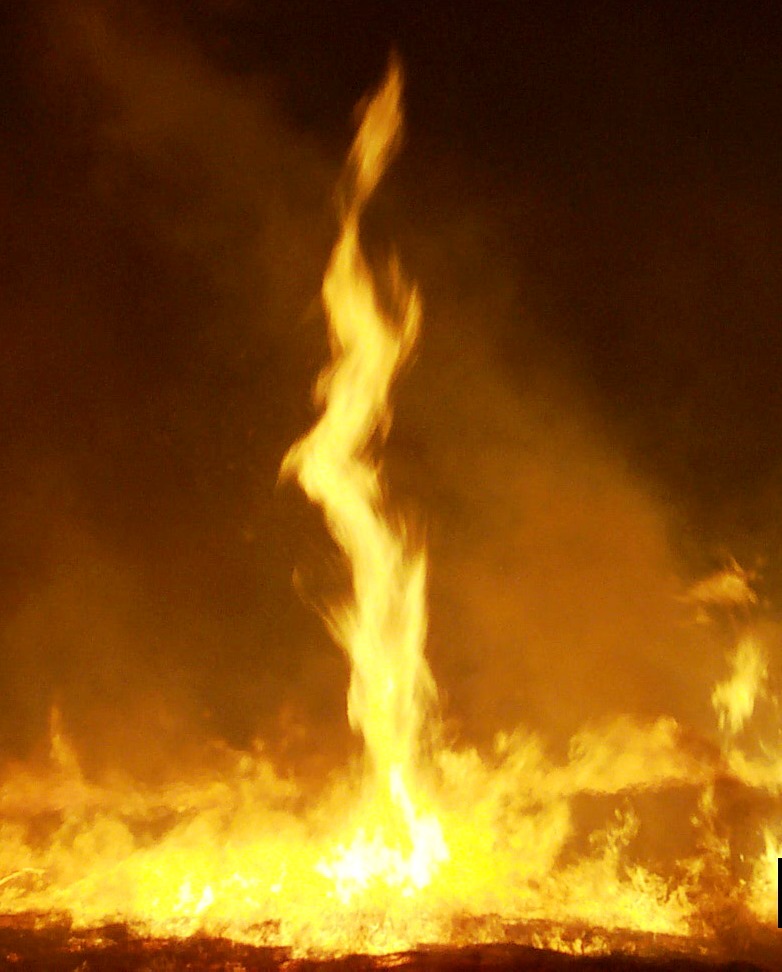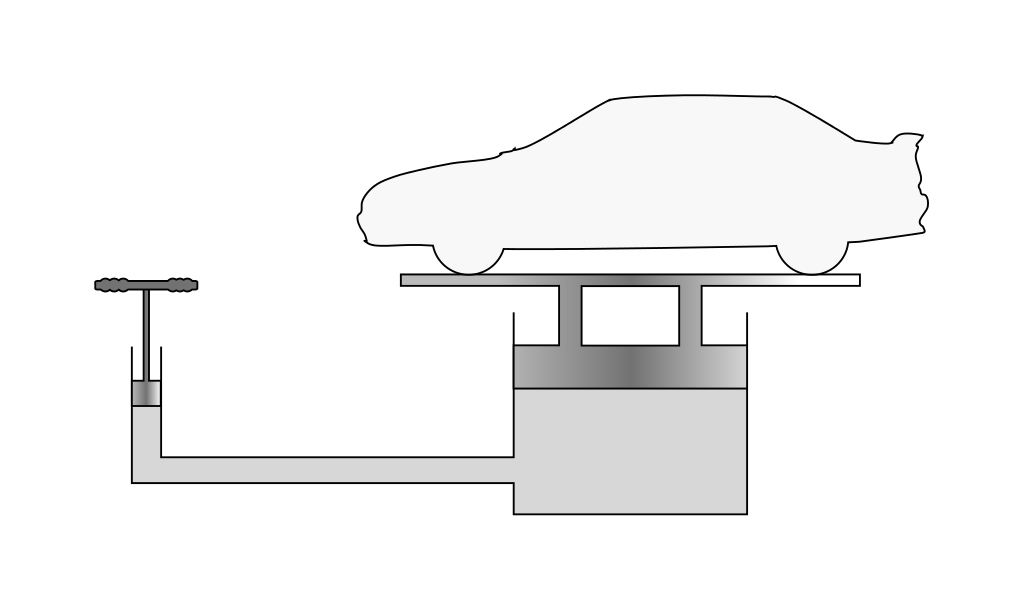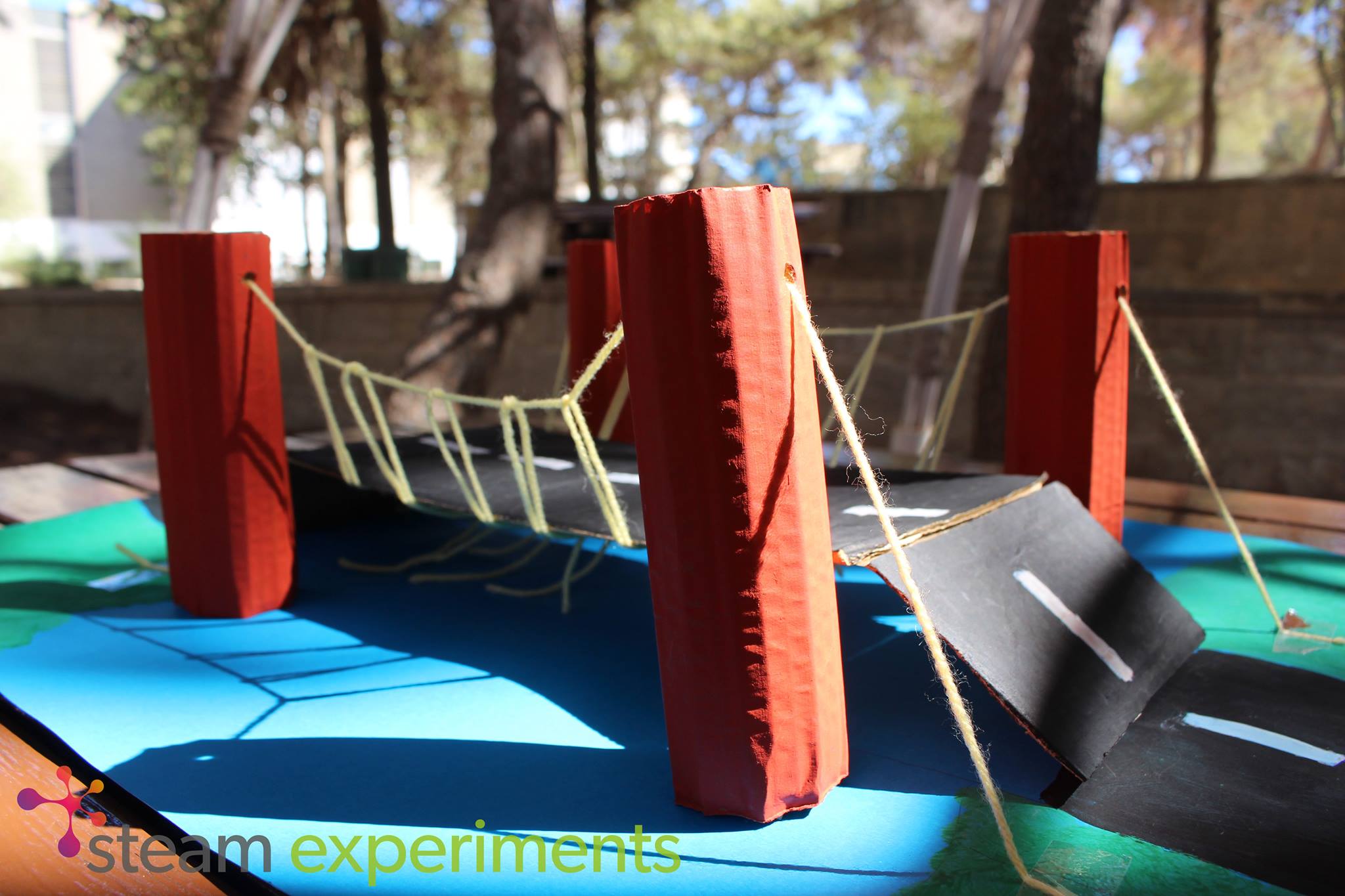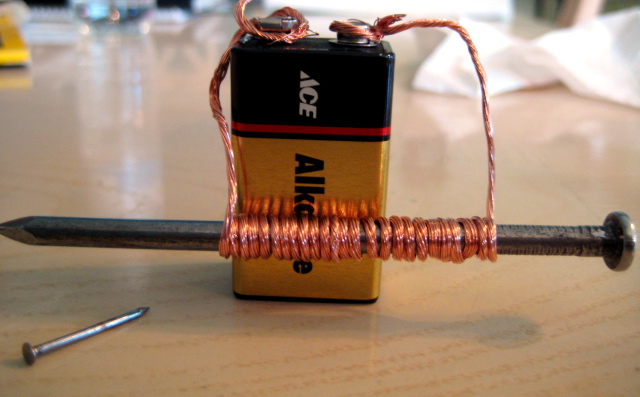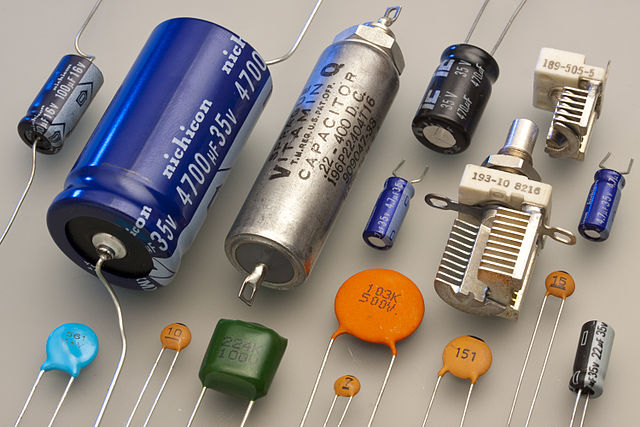Step 1
Secure the turntable to a base so that it is in a stable and safe position. The base could consist of a normal table or the floor, for example.
Step 2
Place some cotton balls in the metal/glass container.
Step 3
Pour the propan-2-ol (isopropyl alcohol) onto the cotton balls and make sure that they are thoroughly soaked.
Step 4
Put the container in the mesh waste bin and place the bin on the turntable.
Step 5
Light the alcohol soaked cotton balls carefully, ideally using a long match.
Step 6
Spin the turntable consistently and observe the fire vortex.
Step 7
Use the lid to extinguish the fire after the demonstration is complete.
The fire tornado can also be produced by cutting a large cylindrical glass vase in half lengthwise using a diamond cut-off blade to produce two identical halves. The tornado can then be created by burning some cotton balls soaked in alcohol in a small container and encasing the container with the two halves of the cylindrical vase. The two halves of the cylinder should not touch; there should be a gap of a couple of centimeters between the edges where the vase was cut. Thick gloves should be worn throughout the duration of the experiment and glass cutting should only be carried out by adults.
As the air in the vase above the flame gets heated it rises, pulling cooler air through the two gaps in the glass encasing around the flame. A vortex is created as the moving air rotates along the cylindrical shape of the vase
(https://www.youtube.com/watch?v=1BxQd6AGYiI).
Different coloured flames can be produced by burning different chemicals to create the vortex. The chemicals can be introduced by simply adding them in the container with the cotton and alcohol. For example, lithium can be used to produce a red flame, boric acid (hydrogen borate) for a green flame and sodium chloride for a yellow flame. Some chemicals can produce highly toxic fumes when burnt – health and safety information about chemicals can be obtained from https://pubchem.ncbi.nlm.nih.gov/.
- Only a trained demonstrator should perform this experiment.
- Do not wear loose fitting clothing and tie long hair back.
(http://sciencing.com/safety-precautions-using-flames-science-22224.html). - Wear safety goggles and a lab coat.
- Ensure the workspace is clear of objects before commencing with the experiment. This is especially important for flammable materials. (http://sciencing.com/safety-precautions-using-flames-science-22224.html).
- A fire blanket and fire extinguisher should be kept nearby during the experiment. An adult present during the experiment should know how to use this fire safety equipment.
- If flammable liquid is spilt on the clothing of a participant or observer of the experiment they should change before the cotton buds are ignited.
- The experiment should not be carried out on a flammable surface, for example a wooden table.
- The experiment should not be carried out in the presence of draughts or on a windy day outside as this can result in flames being blown in the direction of/onto participants.
- Once the fluid in the cotton buds has been ignited, participants should not place any part of their body over or near the flame.
Imagine you are a physicist tasked with understanding fire vortices to help predict and control forest fires. You have been asked to explain how the speed of the air’s rotation and fuel type affects the scale and duration of the fire vortices. You get to work on a small scale vortex to test out your hypothesis.
Does this phenomenon occur naturally?
Yes, fire whirls are commonly reported in forest fires.
What causes the flame to whirl?
Rising air causes an area of low pressure inside the glass column. Air is sucked in from the sides creating a whirl in the process.
Does the whirling make the flame go higher?
Yes. The spinning convection currents makes the flame go higher. The whirl itself also adds more oxygen to the combustion.
What are the three elements of the fire triangle?
A fire requires 3 elements: Oxygen, Heat and Fuel.
Does hot air rise or sink?
Hot air rises (Hot air expands and becomes less dense than surrounding air).
The fire heats up the surrounding air, causing it to expand and become less dense than the cooler air further away from the flame. This causes the warm air to rise. Cool air from the sides then flows towards the heat of the flame. This mechanism, in which warm air rises and is replaced by cooler air, is called a convection current. In the presence of a spinning mesh around the fire, the air coming towards the flame from the sides is forced to spin slowly. As the air moves closer to the flame it moves faster causing the flame to spin, forming the fire vortex.
The spinning air results in the evaporation of more fuel thus causing the flame to grow. Also, since the air is spinning, it is forced outward by a centrifugal force. Lack of oxygen explains the formation of black smoke over the fire vortex as the fuel does not completely burn. (https://www.thenakedscientists.com/get-naked/experiments/flame-tornado-spinning-column-fire).
The theory of vortices was developed back in the 1800’s and is still of much importance today especially in the forecasting of hurricanes and storms.
(https://mysite.du.edu/~jcalvert/tech/fluids/vortex.htm)
In a fire vortex, the fire creates a rising column of air which sucks cooler air from the sides due to the convection currents created. As the air is being pulled towards the flame, it begins to swirl. The principle of angular momentum dictates that a spinning body having its mass distribution concentrated at the centre will spin faster. Therefore the air spins faster and faster as it travels closer to the centre of the whirl. (http://www.livescience.com/45676-what-is-a-firenado.html).
This relation is described mathematically as
w = L⁄I
where w is the angular velocity, L is the angular momentum and I is the moment of inertia. Indeed, as the moment of inertia increases, in the process of the air being pulled towards the centre, the angular velocity of the spinning air also increases.
In most cases vortices in a fluid lead to turbulence. The regime of turbulent flow is a very difficult one and to date there is no full mathematical description of such flow. (http://hyperphysics.phy-astr.gsu.edu/hbase/pturb.html).
Applications
The same principles which are used to explain the formation of fire vortices are also used to explain the formation of Hurricanes. The sun heats the sea causing an upwelling which draws air from the sides. The air can be drawn from thousands of kilometres away and the spinning of the earth causes the air to rotate as well. The closer the air moves to the centre, the faster it spins, creating hurricanes with immense force. (https://www.thenakedscientists.com/get-naked/experiments/flame-tornado-spinning-column-fire).
Research
The conditions for fire whirls are ideal in forest fires. Indeed, these fire whirls pose a danger to firefighters trying to control such fires. Several studies have been conducted in order to model fire vortices to better understand their behaviour. One particular study done at the University of Coimbra in Portugal, analysed how vorticity varies with the forest fuel, burning rate and intensity of the fire by conducting a laboratory scale experiment.
(https://www.researchgate.net/publication/311343641_Fire_whirls_in_forest_fires_An_experimental_analysis).

